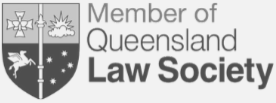Changes to Victorian IVF laws
There have been changes to the Assisted Reproductive Treatment Act 2008 (Vic) which commenced on 24 June 2022:
- Enabling individuals such as nurses within a registered ART provider to undertake artificial insemination under the supervision and direction of a doctor within that provider.
- This amendment improves access to artificial insemination by permitting nurses and other relevant health professionals under supervision and direction, to perform this treatment.
- The Assisted Reproductive Treatment Act 2008 already refers to the terms ‘supervision’ and ‘direction’ which are not defined. The nature of supervision and direction is determined by the relevant ART providers according to accepted clinical considerations, and relevant frameworks and policies.
- Those who have obligations under divisions 2, 3 and 4 of the Assisted Reproductive Treatment Act 2008 relating to artificial insemination treatments, including with respect to consent, counselling and advice, are still required to meet those obligations. For example:
-
- Doctors continue to be responsible for determining that the woman has met the prerequisites for treatment in accordance with section 10, including that the woman and her partner have consented to treatment in the prescribed form and that the consent is current.
- Other requirements that must be complied with include the woman and her partner undergoing pre-treatment mandated counselling, donors consenting to their donation in the prescribed form and receiving pre-donation mandated counselling, donors providing prescribed information and being advised of their rights and certain matters regarding the donor registers, and record keeping.
- Where a nurse or other health professional carries out artificial insemination under the supervision and direction of a doctor, that nurse or other health professional is responsible for satisfying themselves that the requirements of divisions 2, 3 and 4 of the Assisted Reproductive Treatment Act 2008 have been met.
- Expanding the circumstances where a deceased person’s gametes or an embryo formed from those gametes can be used in a surrogacy arrangement with the written consent of the deceased:
- This now includes circumstances where:
- a man wishes to use his deceased male partner’s sperm in a surrogacy arrangement
- a woman wishes to use her deceased female partner’s eggs in a surrogacy arrangement
- a woman wishes to use her deceased male partner’s sperm in a surrogacy arrangement
- The change does not apply retrospectively to existing stores of a person’s gametes and embryos where they have provided written consent to posthumous use prior to the commencement of the change.
- From the commencement of the change, a person could provide a new written consent in relation to existing stores of that person’s gametes and embryos to allow for posthumous use in the expanded circumstances.
- This now includes circumstances where:
- Amending language in the ‘Guiding Principles’ of the Assisted Reproductive Treatment Act 2008 and making the Guiding Principles more inclusive. These changes:
- Replace the term ‘men and women’ with ‘individuals’, replace the term ‘genetic parents’ with ‘donors’ and replace the term ‘marital status’ with ‘marital or relationship status, gender identity, sex characteristics’.












